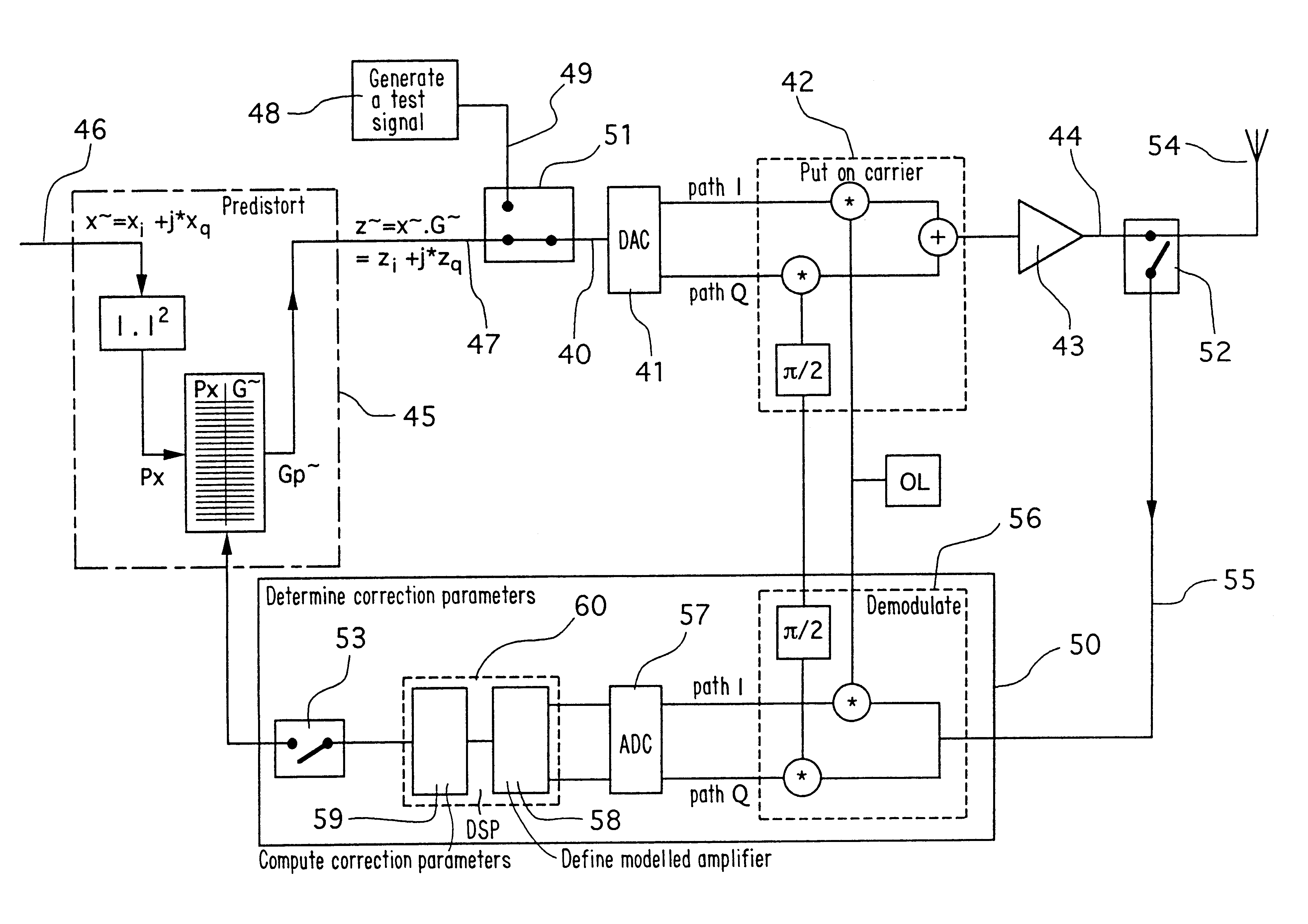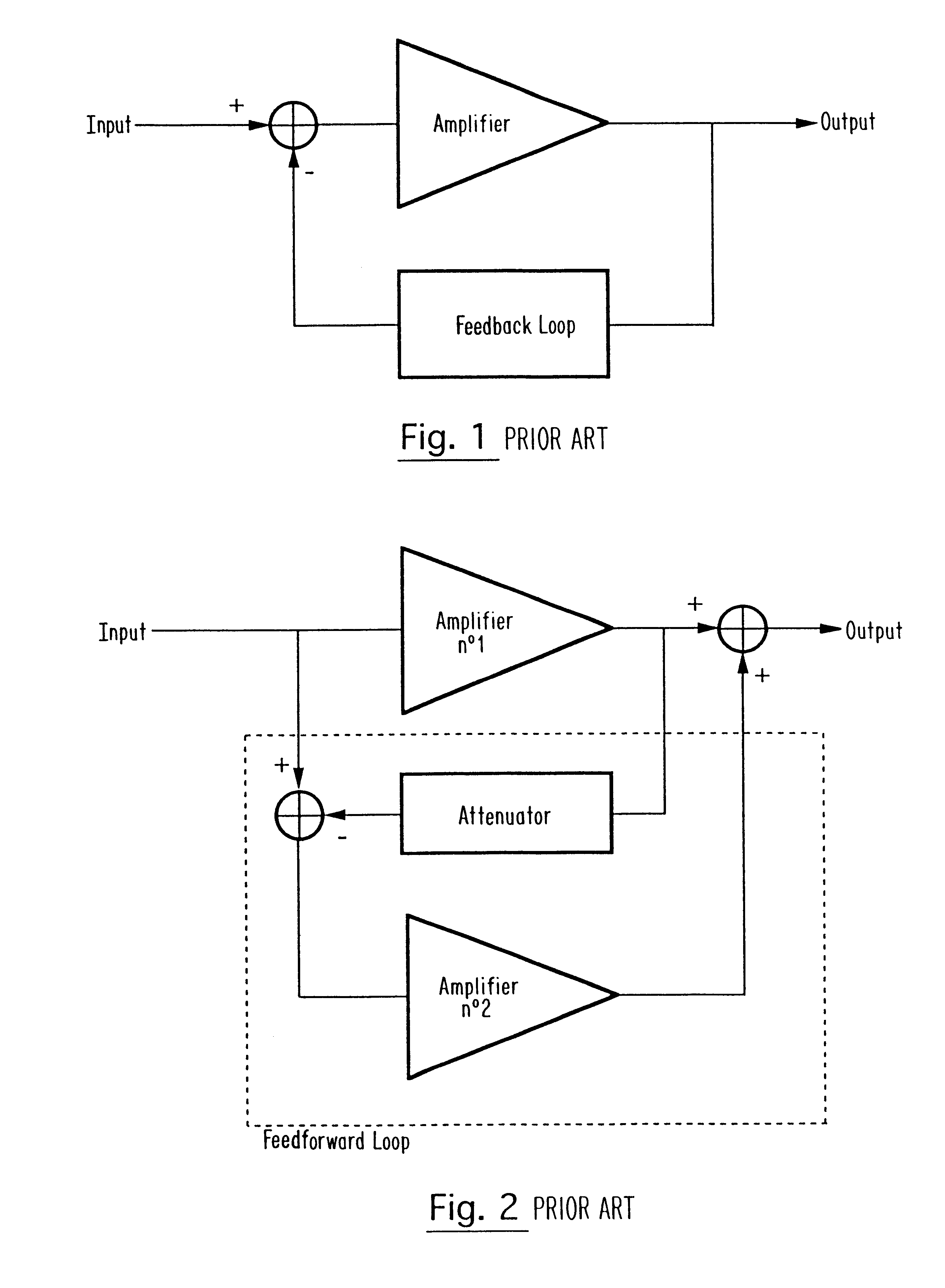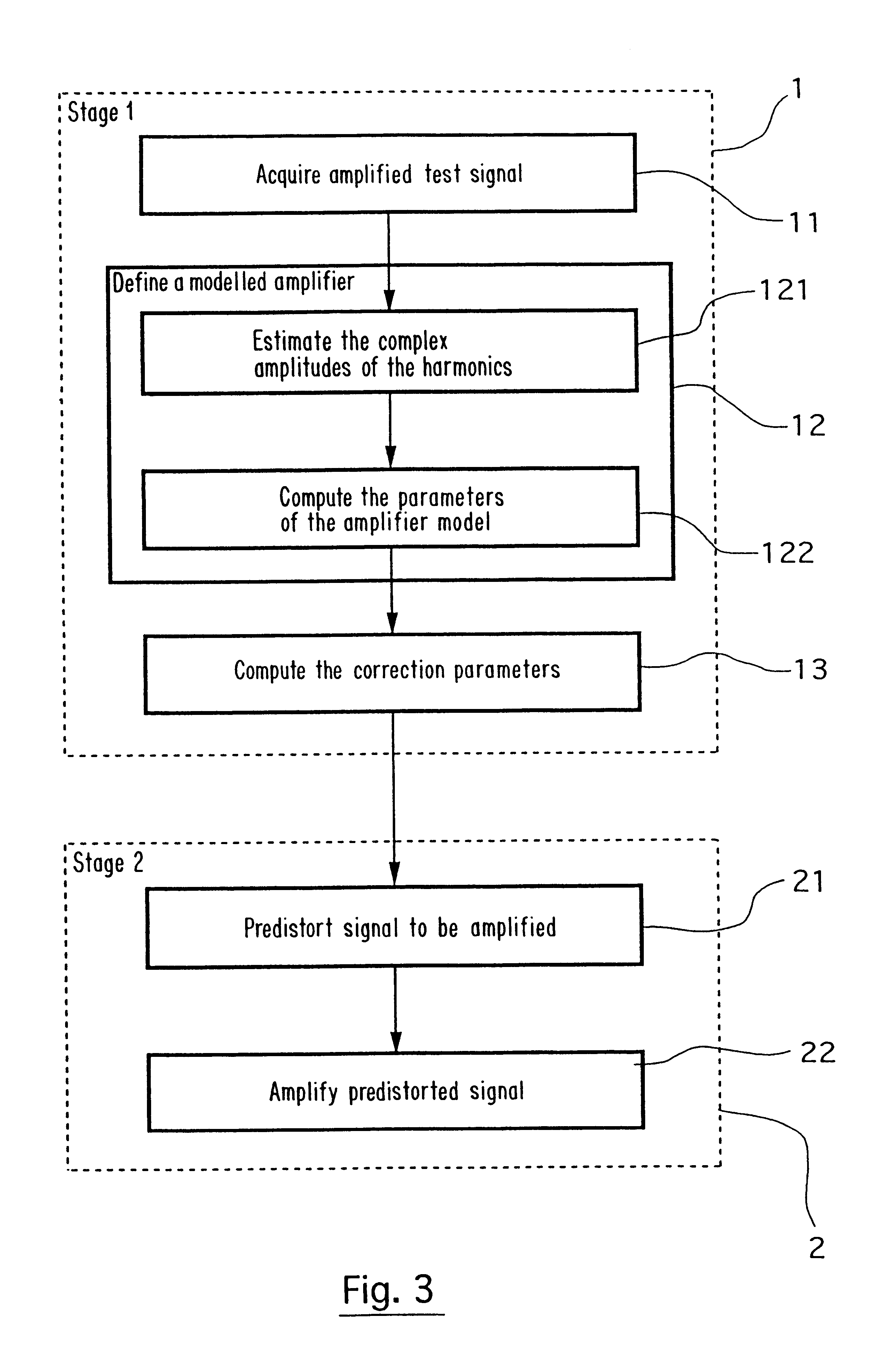Method and a system for digitally linearizing an amplifier
- Summary
- Abstract
- Description
- Claims
- Application Information
AI Technical Summary
Benefits of technology
Problems solved by technology
Method used
Image
Examples
Embodiment Construction
The invention relates to a method and a system for digitally linearizing an amplifier.
As shown in the flow chart of FIG. 3, the linearization method of the invention is of the type comprising two successive stages 1 and 2.
The purpose of the first stage 1 is to determine correction parameters for correcting the non-linearity of the amplifier. It is recalled that the correction defined by said parameters, which correction is intended to be used during the second stage 2 described in detail below, is predistortion having non-linearity that is the inverse of the non-linearity of the amplifier. The correction parameters are determined by applying a predetermined test signal to the input of the amplifier and by analyzing the signal obtained at the output (this signal being referred to as the "amplified test signal"). At the end of this first stage 1, the correction parameters are stored, e.g. in a "predistortion" table.
The purpose of the second stage 2 is to amplify a given signal linearl...
PUM
 Login to View More
Login to View More Abstract
Description
Claims
Application Information
 Login to View More
Login to View More - R&D
- Intellectual Property
- Life Sciences
- Materials
- Tech Scout
- Unparalleled Data Quality
- Higher Quality Content
- 60% Fewer Hallucinations
Browse by: Latest US Patents, China's latest patents, Technical Efficacy Thesaurus, Application Domain, Technology Topic, Popular Technical Reports.
© 2025 PatSnap. All rights reserved.Legal|Privacy policy|Modern Slavery Act Transparency Statement|Sitemap|About US| Contact US: help@patsnap.com



